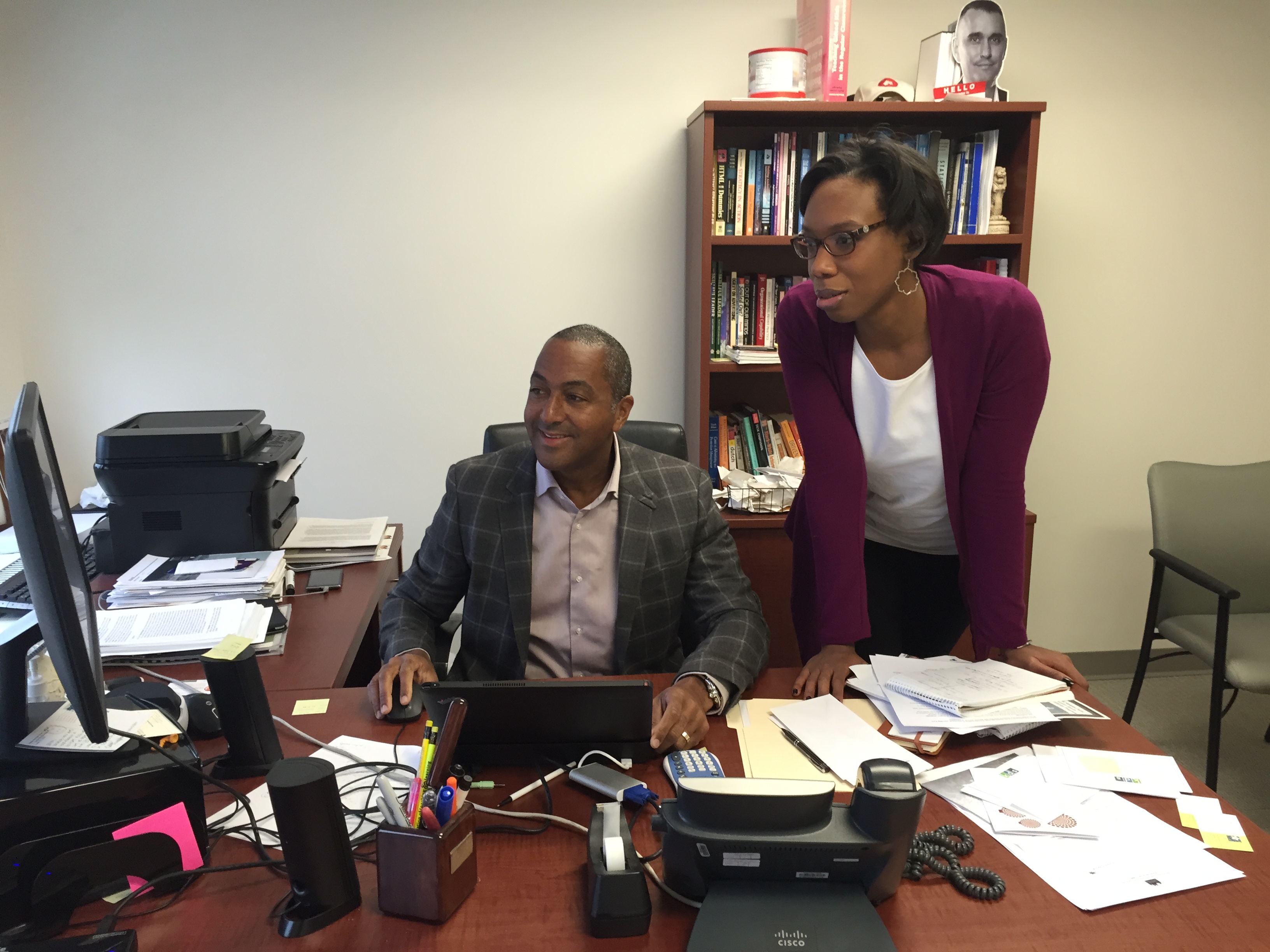Knowledge Delivery Systems helps teachers help kids
Sponsor content from HP


In 2009, Knowledge Delivery Systems was looking for a way to expand its professional development business. The company had been successful in signing up individual teachers for its online seminars, but it hadn't been able to reach a bigger market.
When Alvin Crawford took over as chief executive officer that year, the company made the shift from a retail-based business model to one that focused on landing bigger fish as clients.
"In the past five years, all of our growth has come from working with school districts and states," said Crawford, noting that KDS made the jump with its relatively small staff of just a few dozen people. "We still work with individual teachers looking to improve their skills, but we've scaled up our operation."
The Week
Escape your echo chamber. Get the facts behind the news, plus analysis from multiple perspectives.

Sign up for The Week's Free Newsletters
From our morning news briefing to a weekly Good News Newsletter, get the best of The Week delivered directly to your inbox.
From our morning news briefing to a weekly Good News Newsletter, get the best of The Week delivered directly to your inbox.
That change — plus a laser-like focus on upgrading both its technology and its content — has helped KDS increase its revenue. The company has been expanding — posting 143 percent growth between 2010 and 2013 — despite the 2008 recession, which forced school districts to make deep cuts to their services and resulted in massive teacher layoffs across the country.
But, that's not the only challenge KDS has faced. While local, state and federal governments have budgets for professional teacher development, they are often segmented. That makes it difficult for bigger entities to fund large-scale training programs.
And, it's been a tough sell to get people focused on teacher development as opposed to accountability. Thanks to No Child Left Behind, the education establishment has concentrated on creating tests to measure performance without a corresponding emphasis on helping teachers improve their methods. That imbalance seems to be changing, albeit slowly.
Yet, KDS has found a way to keep moving forward.
A free daily email with the biggest news stories of the day – and the best features from TheWeek.com
In the next five years, the company is expecting to add 20 to 30 large school districts — a multimillion-dollar proposition — as clients. As the country's education system moves towards making college and career readiness the goal for school districts, KDS's mix of online programs will afford these educators a chance to get the training they need to teach to the new standards on their own schedule. The course catalogue is diverse, offering symposia on everything from dealing with cyberbullying to supporting struggling students to teaching writing.
"Our value proposition is that you can spend less per teacher and have more impact," said Crawford. "It's an efficiency story."
How does KDS measure success? Crawford, of course, cites its growing number of subscribers. But, he also adds another measure to the equation.
"We have a double bottom line," he said. "Teachers are in the business of helping kids, and we are in the business of helping teachers."
-
 ‘Lumpy skin’ protests intensify across France as farmers fight cull
‘Lumpy skin’ protests intensify across France as farmers fight cullIN THE SPOTLIGHT A bovine outbreak coupled with ongoing governmental frustrations is causing major problems for French civil society
-
 The best books of 2025
The best books of 2025The Week Recommends A deep dive into the site of a mass shooting, a new release from the author of ‘Atonement’ and more
-
 Inside Minnesota’s extensive fraud schemes
Inside Minnesota’s extensive fraud schemesThe Explainer The fraud allegedly goes back to the Covid-19 pandemic
-
 How Bulgaria’s government fell amid mass protests
How Bulgaria’s government fell amid mass protestsThe Explainer The country’s prime minister resigned as part of the fallout
-
 Femicide: Italy’s newest crime
Femicide: Italy’s newest crimeThe Explainer Landmark law to criminalise murder of a woman as an ‘act of hatred’ or ‘subjugation’ but critics say Italy is still deeply patriarchal
-
 Brazil’s Bolsonaro behind bars after appeals run out
Brazil’s Bolsonaro behind bars after appeals run outSpeed Read He will serve 27 years in prison
-
 Americans traveling abroad face renewed criticism in the Trump era
Americans traveling abroad face renewed criticism in the Trump eraThe Explainer Some of Trump’s behavior has Americans being questioned
-
 Nigeria confused by Trump invasion threat
Nigeria confused by Trump invasion threatSpeed Read Trump has claimed the country is persecuting Christians
-
 Sanae Takaichi: Japan’s Iron Lady set to be the country’s first woman prime minister
Sanae Takaichi: Japan’s Iron Lady set to be the country’s first woman prime ministerIn the Spotlight Takaichi is a member of Japan’s conservative, nationalist Liberal Democratic Party
-
 Russia is ‘helping China’ prepare for an invasion of Taiwan
Russia is ‘helping China’ prepare for an invasion of TaiwanIn the Spotlight Russia is reportedly allowing China access to military training
-
 Interpol arrests hundreds in Africa-wide sextortion crackdown
Interpol arrests hundreds in Africa-wide sextortion crackdownIN THE SPOTLIGHT A series of stings disrupts major cybercrime operations as law enforcement estimates millions in losses from schemes designed to prey on lonely users